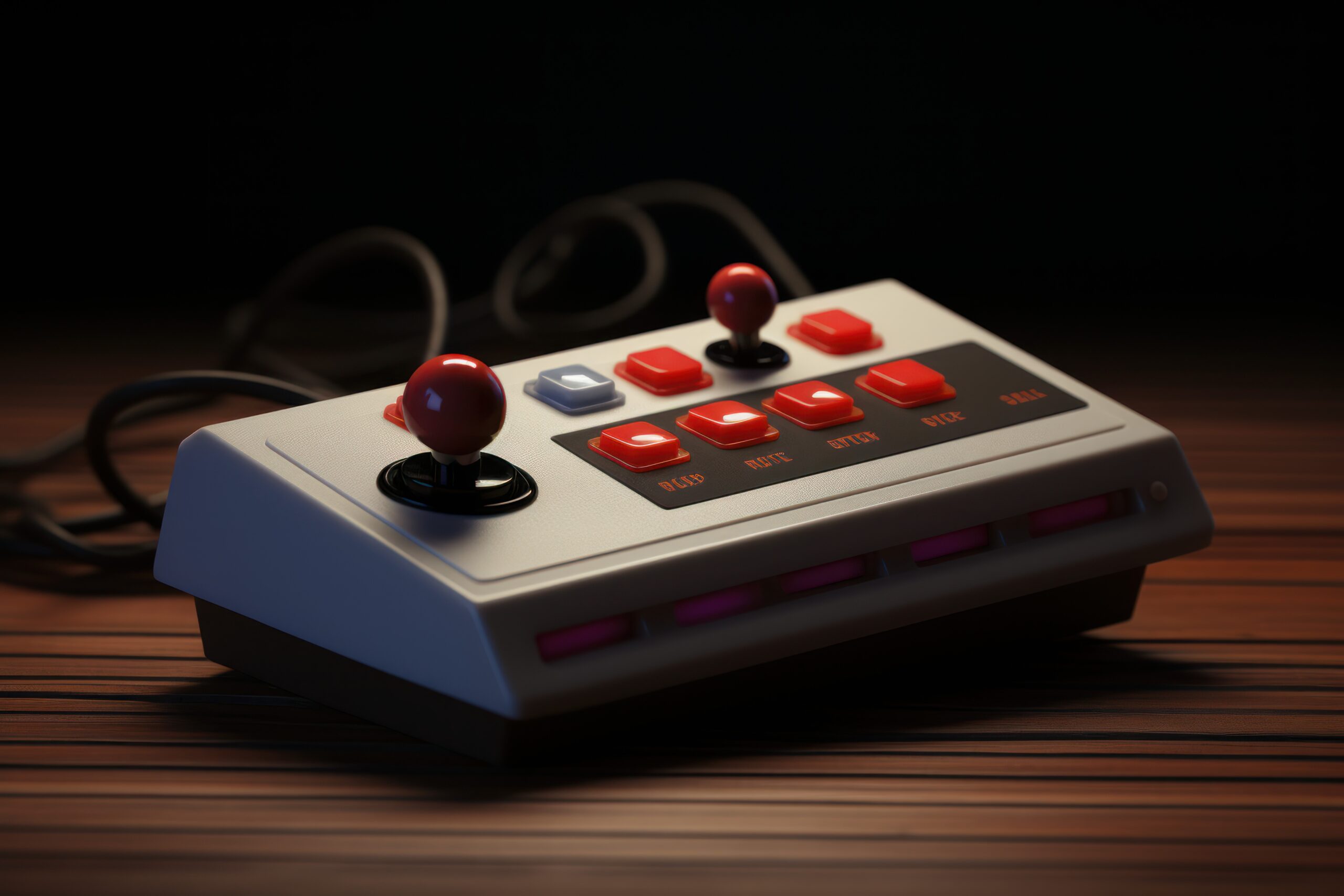TAITO Corporation stands as a pillar in the gaming industry, celebrated for its relentless innovation and iconic contributions to both arcade and home gaming. Founded in 1953 in Japan, the company has transformed the landscape of video games, setting standards that continue to influence the industry today. This article delves into TAITO’s storied history, pioneering innovations, and its lasting impact on global gaming culture, while also exploring the company’s adaptation to modern trends and its prospects for the future.
The Genesis of TAITO Corporation: A Historical Overview
TAITO Corporation’s origins trace back to 1953 when it was established as a company that sold and distributed jukeboxes and amusement equipment. The founders, including entrepreneur Kiichiro Miyamoto, aimed to capitalize on the burgeoning entertainment market in post-war Japan. Initially, TAITO operated as a distributor for various games, but as the industry evolved, so did its ambitions. The company soon realized the potential of developing its own arcade games, a decision that would lead to its monumental place in gaming history.
In the late 1960s, TAITO began to pivot towards the burgeoning video game industry. The first significant step in this transition came with the release of its first arcade game, "Qix," in 1981. This game laid the groundwork for future innovations and provided a glimpse of the creative direction the company would take. As video gaming gained popularity, TAITO’s resolve to innovate led to a series of groundbreaking games that would establish its reputation.
The 1970s marked a pivotal period for TAITO as it embraced the arcade frenzy, showcasing its commitment to developing engaging and entertaining gaming experiences. With a focus on quality and creativity, the company expanded its operations and began to capture the attention of arcade enthusiasts. The introduction of new gameplay mechanics and captivating graphics set TAITO apart from its competitors and positioned it as a leader in the burgeoning industry.
During this era, the Japanese gaming landscape was characterized by rapid changes and the emergence of new technology. TAITO recognized the synergy between arcade gaming and emerging video game technology and sought to push the envelope further. This foresight would set the stage for one of the most important moments in gaming history—the release of "Space Invaders" in 1978.
As TAITO grew in prominence, so did its workforce and operational capabilities. The company invested in research and development, ensuring that it remained at the cutting edge of technology and design. This investment paid off as TAITO quickly became synonymous with innovation and fun, capturing the imagination of gamers across Japan and beyond.
The historical overview of TAITO Corporation showcases a company that was not just a participant in the gaming industry but a driving force behind its evolution. From humble beginnings as a jukebox distributor to becoming a titan in video gaming, TAITO’s journey reflects a commitment to creativity and excellence that continues to resonate today.
Pioneering the Arcade Scene: TAITO’s Early Innovations
TAITO’s early innovations in arcade gaming were characterized by a blend of creativity and technological prowess that set the standard for what arcade games could achieve. In the late 1970s and early 1980s, the company started to release titles that captured players’ imaginations and introduced new gameplay concepts. One such innovation was the use of high-score tables, which encouraged competition among players and added a layer of engagement that was previously unseen in gaming.
The introduction of "Space Invaders" in 1978 marked a watershed moment not only for TAITO but also for the entire gaming industry. The game utilized a simple yet addictive format that allowed players to defend against waves of descending aliens. Its success was unprecedented, leading to a surge in arcade popularity and establishing a template for future games. The game’s mechanics emphasized player skill and precision, characteristics that would become hallmarks of arcade gaming.
TAITO’s development team, led by Tomohiro Nishikado, employed innovative programming techniques that enabled dynamic gameplay experiences. The unique design of "Space Invaders" also included the concept of increasing difficulty, as the speed of the descending aliens accelerated with time, creating a sense of urgency that kept players coming back for more. This level of engagement was revolutionary, prompting other developers to follow suit and refine their own gameplay mechanics.
In addition to "Space Invaders," TAITO released several other innovative titles that pushed the boundaries of arcade gaming. Games like "Bubble Bobble" introduced cooperative gameplay, allowing players to work together to achieve shared goals. This element of collaboration added a new dimension to the gaming experience, fostering social interaction among players and contributing to the arcade culture that flourished during this era.
TAITO also took risks by incorporating unique themes and storytelling elements into its games. Titles like "Arkanoid," which featured a paddle and ball mechanic combined with vibrant graphics and power-ups, captivated players and established a new genre of gaming. These innovations not only showcased TAITO’s creative vision but also laid the groundwork for the diverse range of genres that would emerge in the gaming industry.
The pioneering spirit of TAITO Corporation during the arcade boom highlighted the company’s commitment to creating engaging and innovative gaming experiences. By intertwining captivating gameplay with cutting-edge technology, TAITO set the stage for the future of arcade gaming, leaving an indelible mark on the industry that is still felt today.
The Birth of Space Invaders: Revolutionizing Gaming
The release of "Space Invaders" in 1978 is often regarded as a pivotal moment in the history of gaming, and it is a testament to TAITO’s innovative spirit. Developed by Tomohiro Nishikado, the game redefined what video games could be, blending simple mechanics with addictive gameplay that kept players coming back. The premise was straightforward: players controlled a laser cannon and had to shoot down waves of approaching aliens, all while avoiding their projectiles.
"Space Invaders" revolutionized the gaming landscape through its introduction of the high-score table, creating a competitive environment that encouraged players to improve their skills and achieve higher scores. This feature not only increased player engagement but also led to a cultural phenomenon, transforming the arcade into a social environment where players gathered to challenge each other and share strategies.
The game’s success was staggering, generating thousands of dollars in revenue for arcade operators and making it one of the earliest examples of a blockbuster game. It is estimated that "Space Invaders" earned over $2 billion in quarters in its first year alone, forever changing the economics of arcade gaming. The financial success of the game also underscored the potential for video games as a lucrative industry.
Moreover, "Space Invaders" introduced the concept of levels and escalating difficulty, which became a standard feature in many subsequent games. The thrill of trying to beat one’s previous score, coupled with the challenge of increasingly difficult waves of aliens, created a compelling gameplay loop that resonated with players. This innovative design element set a benchmark for how gameplay could evolve and engage audiences.
The cultural impact of "Space Invaders" cannot be overstated. It sparked a wave of interest in video games, leading to the production of numerous clones and inspired titles. The game’s success also paved the way for other developers to invest in arcade gaming, ultimately shaping the landscape of the industry as a whole. It introduced a new kind of entertainment that combined technology, competition, and social interaction, which continues to define gaming today.
In summary, the birth of "Space Invaders" was not just a significant milestone for TAITO Corporation; it was a transformative moment in the gaming industry. Its innovative gameplay mechanics, competitive elements, and cultural significance established a foundation upon which the video game industry would build for decades to come.
From Arcades to Home Consoles: Expanding Reach
As the popularity of arcade gaming surged in the late 1970s and early 1980s, TAITO recognized the potential to expand its reach beyond arcade cabinets and into the homes of gamers. This transition marked a new chapter in the company’s history, as it sought to adapt its successful arcade titles for home consoles. The introduction of home gaming systems created a new market that TAITO was eager to explore.
The company’s strategic move into home gaming began with the adaptation of its blockbuster titles, such as "Space Invaders" and "Bubble Bobble," for home consoles like the Famicom (Nintendo Entertainment System). These ports not only allowed gamers to enjoy their favorite arcade experiences in the comfort of their homes but also expanded TAITO’s brand recognition and influence in the gaming market. The successful transition of these titles helped to establish TAITO as a key player in the home gaming space.
TAITO’s commitment to quality ensured that the home console versions maintained the essence of their arcade counterparts while also making necessary adjustments for the different gaming environments. For instance, "Space Invaders" was reimagined with enhanced graphics and sound capabilities that took advantage of the Famicom’s technology, providing an immersive experience that captivated players. The ability to play these games at home significantly broadened TAITO’s audience and solidified its reputation for delivering engaging gaming experiences.
In addition to adapting existing arcade titles, TAITO began to develop original games specifically designed for home consoles. This creative expansion allowed the company to explore new genres and storytelling techniques that were more suited to the home gaming experience. Titles such as "The Legend of Kage" and "Gimmick!" showcased TAITO’s ability to innovate within the home console market, garnering critical acclaim and establishing a loyal fan base.
The shift from arcades to home consoles was emblematic of a broader industry trend, as more players sought the convenience and accessibility of gaming at home. TAITO’s foresight in recognizing this shift enabled the company to capitalize on emerging technologies and consumer preferences. By embracing the home console market, TAITO not only expanded its reach but also contributed to the evolution of gaming as a mainstream entertainment medium.
As the home gaming market continued to grow, TAITO’s legacy of innovation persisted, with the company consistently pushing the boundaries of what was possible in video games. Its successful transition from arcade to home gaming solidified its status as a pioneer in the industry and laid the groundwork for future generations of gamers to experience the joy of TAITO’s creations.
Iconic Franchises: The Legacy of TAITO’s Games
TAITO Corporation is synonymous with a range of iconic franchises that have left an indelible mark on the gaming industry. Titles like "Space Invaders," "Bubble Bobble," and "Arkanoid" are not just games; they represent a legacy of creativity and innovation that has captivated players for generations. Each franchise brought unique gameplay mechanics and enduring characters, contributing to TAITO’s reputation as a leader in the gaming world.
"Space Invaders," as previously mentioned, paved the way for the shooting genre and set the standard for competitive arcade games. Its influence extended well beyond its release, inspiring countless sequels, remakes, and merchandise. The simple yet effective mechanics of "Space Invaders" also led to the creation of various spin-off titles, such as "Space Invaders Extreme," which modernized the gameplay for new audiences while preserving the essence of the original.
Another cornerstone of TAITO’s legacy is the charming puzzle-platformer "Bubble Bobble," released in 1986. The game featured two adorable dinosaur-like characters, Bub and Bob, who navigated through levels filled with enemies, utilizing bubbles to defeat foes and trap them. The cooperative gameplay element made "Bubble Bobble" a favorite among friends, reinforcing the social aspect of gaming that was vital during the arcade era. The franchise has seen numerous sequels and spin-offs, cementing its status as a beloved classic.
"Arkanoid" also stands out as a significant contribution to the gaming landscape. Released in 1986, this brick-breaking game introduced the innovative “paddle” mechanic, allowing players to control a ball that would bounce off bricks to clear levels. The success of "Arkanoid" sparked a wave of similar games, establishing a new genre in the gaming community. Its legacy continues with sequels and remakes that adapt the classic gameplay to new technologies and platforms.
TAITO has also ventured into other genres, showcasing its versatility as a game developer. Titles like "Darius," a side-scrolling shooter, brought innovation with its multi-screen gameplay and unique branching paths, allowing players to choose their routes through levels. The Darius franchise remains popular today, with recent releases appealing to both retro enthusiasts and new players alike.
The impact of TAITO’s iconic franchises extends beyond mere gameplay; they have influenced game design, marketing, and even cultural phenomena. TAITO’s commitment to quality and creativity has ensured that its games remain relevant and cherished, contributing to the company’s enduring legacy in the gaming industry. These franchises not only highlight TAITO’s innovative spirit but also illustrate the company’s ability to adapt and thrive in an ever-changing market.
Technological Advancements: Pushing Gaming Boundaries
Throughout its history, TAITO Corporation has been at the forefront of technological advancements in the gaming industry. From pioneering hardware innovations to pushing the limits of game design, TAITO has consistently sought to enhance the gaming experience for players. One of the key aspects of its success has been the company’s ability to embrace new technologies and integrate them into its products, often before they became industry standards.
In the late 1970s and early 1980s, TAITO was one of the first companies to experiment with vector graphics and advanced sound systems in arcade games. This commitment to cutting-edge technology resulted in visually stunning and immersive game experiences that captivated players. For instance, the use of high-quality sound effects and music in "Space Invaders" significantly enhanced the overall gameplay, creating an atmosphere that drew players in.
With the introduction of the 16-bit era, TAITO continued to innovate by developing games that showcased the enhanced capabilities of home consoles. Titles like "Super Bust-A-Move" and "Darius II" featured improved graphics, sound, and gameplay mechanics that pushed the boundaries of what was possible at the time. These advancements not only elevated the quality of gaming but also set a high bar for competitors in the industry.
Furthermore, TAITO has been instrumental in the development of arcade hardware that allowed for smoother gameplay and greater player engagement. The company’s dedication to creating high-quality arcade machines resulted in an impressive lineup of cabinets that became staples in arcades worldwide. This commitment to excellence in hardware design has played a crucial role in the company’s reputation as a leader in the gaming industry.
In recent years, TAITO has adapted to the rise of digital gaming and mobile platforms, leveraging emerging technologies to remain relevant in a rapidly evolving market. The company has transitioned many of its classic titles to mobile devices and online platforms, allowing a new generation of players to experience its beloved games. By embracing digital distribution methods, TAITO has ensured that its games continue to reach audiences far and wide.
Through its relentless pursuit of technological advancements, TAITO Corporation has played a pivotal role in shaping the gaming industry. Its innovative spirit and willingness to adapt to new technologies have not only enhanced the quality of its games but have also set the stage for future developments in the gaming landscape. As the industry continues to evolve, TAITO’s legacy of pushing boundaries remains a guiding force in the quest for gaming excellence.
Collaborations and Partnerships: Expanding Influence
TAITO Corporation’s success in the gaming industry can be attributed, in part, to its strategic collaborations and partnerships with other companies. These alliances have enabled TAITO to expand its influence and reach new audiences, ultimately contributing to the growth of the gaming ecosystem. By working with other industry leaders, TAITO has been able to blend its creative expertise with technological innovations, resulting in memorable gaming experiences.
One notable partnership was with Nintendo during the early years of home console gaming. TAITO’s adaptation of its arcade titles, such as "Space Invaders" for the Nintendo Entertainment System (NES), helped solidify the console’s library and introduced millions of players to TAITO’s beloved franchises. This collaboration not only boosted TAITO’s profile but also contributed to the NES’s dominance in the home gaming market during the 1980s.
In addition, TAITO has collaborated with various developers and publishers to create cross-promotional campaigns that benefit both parties. The release of "Taito Legends," a compilation of classic TAITO titles for modern consoles, exemplifies this approach. By partnering with publishers like SCEE and Xbox, TAITO was able to reintroduce its iconic games to a new audience, ensuring that the company’s legacy remained alive in the digital age.
Furthermore, TAITO has explored partnerships with arcade operators worldwide, allowing its games to reach a global audience. By providing operators with high-quality, engaging arcade cabinets, TAITO has established itself as a key player in the international arcade market. These collaborations have created opportunities for TAITO to expand its brand recognition and maintain its presence in the competitive arcade landscape.
In recent years, TAITO’s collaborations have extended into the realm of mobile gaming, where partnerships with mobile developers have led to the successful adaptation of classic titles for smartphones and tablets. This strategic move has allowed TAITO to tap into the growing mobile gaming market, bringing its beloved franchises to millions of players who prefer gaming on the go.
Through its commitment to strategic collaborations and partnerships, TAITO Corporation has successfully expanded its influence within the gaming industry. These alliances have not only enhanced the reach of its iconic franchises but have also facilitated innovation and growth, ensuring that TAITO remains a key player in the ever-evolving landscape of gaming.
The Impact of TAITO on Global Gaming Culture
TAITO Corporation’s contributions to the gaming industry extend far beyond its impressive library of games; the company has significantly influenced global gaming culture as a whole. From the arcade boom of the late 1970s and early 1980s to the rise of home gaming, TAITO has played a pivotal role in shaping the ways in which players engage with video games. Its innovative designs, immersive experiences, and beloved franchises have left an indelible mark on gaming communities worldwide.
The success of "Space Invaders" not only propelled TAITO to stardom but also sparked a cultural phenomenon that reshaped societal attitudes toward gaming. As players flocked to arcades to compete for high scores, a new social environment emerged, characterized by camaraderie and competition. The arcade became a gathering place for friends and strangers alike, fostering a sense of community among gamers that remains a vital aspect of gaming culture today.
Moreover, TAITO’s innovative gameplay mechanics and engaging storylines have inspired countless developers and game designers over the years. The company’s pioneering efforts in arcade gaming laid the groundwork for the evolution of video game design, encouraging others to explore new genres and styles. As a result, TAITO’s influence can be seen in numerous games across various platforms, showcasing the company’s lasting impact on the industry.
In addition to shaping gameplay and design, TAITO has also contributed to the cultural lexicon surrounding gaming. Terms like "high score," "cooperative gameplay," and "boss battles" have become commonplace within the gaming community, reflecting the mechanics popularized by TAITO’s iconic titles. The company’s innovative spirit has not only transformed gaming but has also helped to establish video games as a legitimate form of entertainment and art.
TAITO’s commitment to nostalgia and the preservation of its classic titles has also played a role in maintaining its cultural relevance. By re-releasing beloved games and adapting them for modern platforms, TAITO has ensured that new generations of players can experience the joy of titles like "Bubble Bobble" and "Arkanoid." This dedication to celebrating its heritage resonates with long-time fans while also attracting new audiences to its iconic franchises.
In summary, TAITO Corporation’s impact on global gaming culture is profound and multi-faceted. Through its innovative gameplay, community-building efforts, and commitment to preserving its legacy, TAITO has not only shaped the gaming industry but has also fostered a vibrant culture that continues to thrive today. The company’s influence serves as a reminder of the power of video games to bring people together and create shared experiences.
Embracing Change: Adapting to Modern Gaming Trends
As the gaming industry has evolved, so too has TAITO Corporation’s approach to game development and distribution. The








